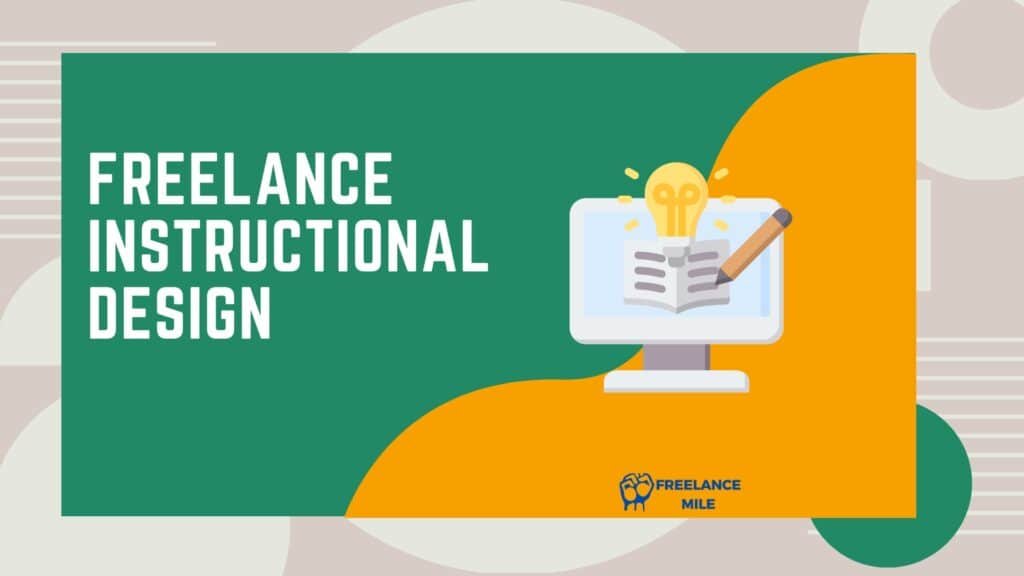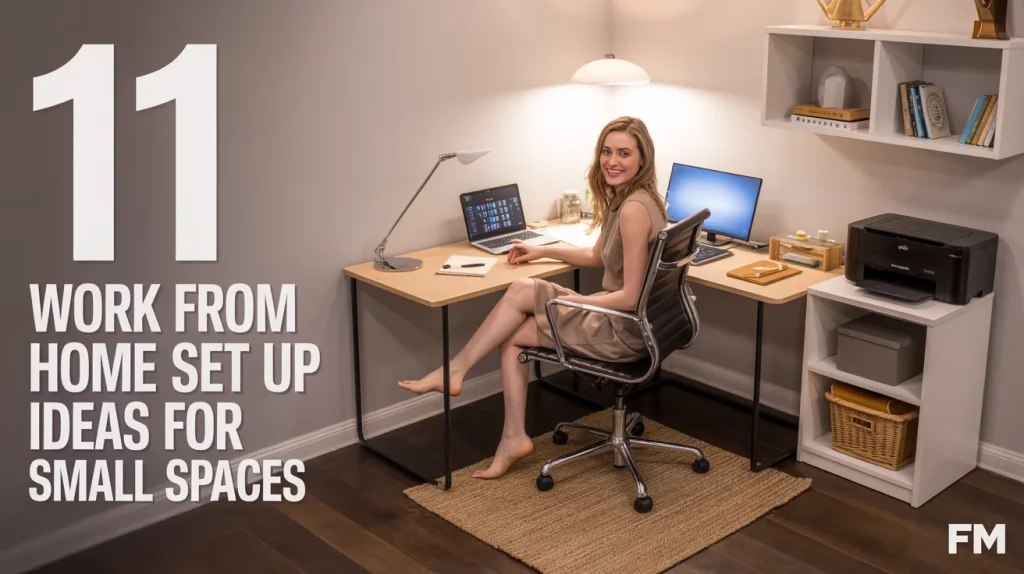To thrive in freelance instructional design, it is important to establish a strong online presence that showcases your skills and expertise. This includes creating a professional website and LinkedIn profile, as well as maintaining an online portfolio that highlights your work. Networking and building relationships with potential clients, particularly those outside of your immediate field, is also vital.
For newcomers and those considering a career switch, these elements are crucial for success in remote work.
Want more insights? Dive into the detailed guide below.
Key Takeaways
- Highlight transferable skills for a competitive edge in freelance instructional design.
- Create a compelling portfolio to showcase your abilities to potential clients.
- Embrace constant learning to keep up with the latest trends & tools.
- Utilize networking platforms like LinkedIn for visibility and job opportunities.
- Be adaptable and ready to evolve with the dynamic remote work landscape.
- Acknowledge the value of your work in establishing fair pricing models.
- Equip yourself with the essentials for legally structuring your freelance business.
The Essential Skills for Thriving in Freelance Instructional Design

Starting a career in freelance instructional design isn’t just about your design skills. You also need several other vital skills and a progressive way of thinking. Knowing the ins and outs of modern eLearning is key to a successful freelance career.
Adopting the Right Mindset for Freelance Success
To make it in freelance instructional design, skill alone won’t cut it. You also need a strong, flexible mindset. This foundation will help you manage projects, solve problems creatively, and work well in teams. It involves being proactive, dealing with stakeholders well, and creating meaningful learning experiences.
Acquiring Proficiency in eLearning Tools like Articulate Storyline and iSpring Suite
Knowing how to use eLearning tools like Articulate Storyline and iSpring Suite is crucial. These tools help you create interactive and engaging content that meets today’s eLearning standards. Mastering them means you can offer a wide range of effective learning solutions.
Learn Theories and Models
Important theories and models include ADDIE, Bloom’s Taxonomy, Kirkpatrick’s Model, Gagne’s Nine Events, and Mayer’s Multimedia Principles.
Understanding Learning Management Systems and Content Development
Being skilled at using Learning Management Systems (LMS) is essential for content development. You need to know how to use these systems to create impactful and personalized courses. Aligning your design work with instructional principles means your courses will educate, engage, and be memorable.
| Competency | Articulate Storyline | iSpring Suite | Learning Management Systems |
| Interactivity | High | Moderate | Varies by Platform |
| Accessibility | Accessible Design Features | Mobile-friendly Options | Inclusion of Accessibility Standards |
| Ease of Use | User-friendly Interface | Quick Content Creation | Dependent on LMS User Interface |
| Customization | Extensive Customization Options | Template-based Customization | Platform-specific Customization Tools |
| Assessment Capabilities | Advanced Quizzing Tools | QuizMaker Integration | Assessment Management Features |
By focusing on continuous learning and keeping up with new tech and methods, your skills stay sharp. As you grow, the way you combine these essential skills will shape your career in freelance instructional design.
Strategies for Building a Solid Freelance Instructional Design Portfolio
Starting your journey as a freelance id? Your instructional design portfolio is vital. It shows clients what you can do. Build it by selecting training materials and projects that showcase your skills and project management abilities.
Here are some tips to make your portfolio stand out and impress clients as an instructional design freelancer.
- Accumulate Real-World Experience: Take part in internships, volunteer tasks, or part-time jobs. These experiences add valuable content to your portfolio.
- Bootcamp & Workshop Participation: Attending bootcamps and workshops led by experts boosts your skills. These experiences enrich your portfolio.
- Documentation of Project Work: Record the details of each project. Include the problem, solution, project journey, and outcomes. It showcases your strategic approach and project management talent.
- Feedback and Testimonials: Add client testimonials and feedback. They highlight the effectiveness of your work and your skill in delivering top-notch instructional designs.
- Continuous Learning: Keep learning new things. Update your portfolio with the latest trends & technologies in the field to showcase that you’re a leading industry professional.
These steps are key to showcasing your expertise in instructional design. Be meticulous and creative. Let your portfolio clearly and attractively present your work.
| Portfolio Element | Why It’s Important | How to Develop It |
| Sample Projects | Shows your skill in creating real learning solutions. | Work on mock projects or use anonymized work from the past. |
| Client Testimonials | Boosts your trustworthiness with endorsements. | Ask for feedback after a project to enhance your portfolio. |
| Detailed Case Studies | Demonstrates how you tackle problems and manage projects. | Include the situation, the challenge, your actions, and the outcomes of projects. |
| Diverse Training Materials | Shows your ability to create various types of instructional content. | Develop materials for different sectors or learning goals. |
| Proof of Continuous Education | Shows you’re committed to learning and staying up-to-date. | Showcase any relevant courses or certifications you’ve completed. |
Your instructional design portfolio is an ongoing project. Keep it up-to-date as you achieve more in your career as a freelance instructional design freelancer. It’s a reflection of your growing skills and dedication to quality training materials.
Maximizing Your Network: Finding Clients and Forming Partnerships
In the world of freelance instructional design, finding clients and making partnerships is key. As a freelancer at your own company, networking wisely leads you to success. Learn how to use social media, talk with experts, and focus on networking to grow your career.
Using Social Media Platforms to Find Potential Clients
Social media is more than a place for just chatting. It’s a strong way to grow professionally and find clients. Use LinkedIn, Twitter, and Instagram to show off your work and skills. This helps attract clients and start future partnerships.
Collaborating with Subject Matter Experts and Other Freelancers
Working together is vital for creating great content and happy clients. Working with experts makes your content trusted and engaging. Joining forces with other freelancers brings more skills to the table. This teamwork leads to better results and more big projects from referrals.
Importance of Continuous Networking and Relationship Building
Networking is a long-term effort. It builds relationships that are crucial for a successful freelance business. A casual chat at a conference or online can lead to new clients. Build these connections honestly, looking for long-term teamwork.
| Social Media Platform | Advantages | Tips for Engagement |
| Professional networking, direct access to businesses and hiring managers | Regularly post instructional design content, join groups, engage with industry leaders’ posts | |
| Engage in real-time conversations, reach a broad audience | Utilize relevant hashtags, participate in Twitter chats related to instructional design | |
| Showcase visual aspects of projects, reach younger demographics | Post behind-the-scenes looks at projects, use Instagram Stories for quick tips and insights |
Using a smart approach in social media and seeking partnerships actively can help you find clients and strengthen your business. Keep building those relationships. Your hard work will turn into successful partnerships and a growing business.
Establishing Your Freelance Instructional Design Business
Starting your expedition as a freelance instructional designer means wearing many hats. You need to set up your business carefully. Knowing the legal details and making engaging content are big parts of your job. Let’s learn how to start your business right, so it stands out and fits your skills.
Setting Up Your Business: Legalities and Administrative Essentials
Beginning as a freelance instructional designer requires understanding the legal and administrative sides. You must choose the best structure for your business, like being a sole owner or creating an LLC. This choice impacts your taxes and how much you’re at risk. Managing projects well is also key, as it involves keeping an eye on deadlines, budgets, & talking to clients effectively.
Establishing a Competitive Pricing Model for Your Services
Coming up with your pricing isn’t simple; it shows how much you think your work is worth. As a freelancer, you need to figure out a price that’s fair and reflects your value. You might charge by the hour, by the project, or based on the value you provide. Make sure people understand and agree with your pricing.
Evaluating Job Types and Deciding on Project Selection Criteria
Finding your special area of work is crucial. The market offers different jobs, from corporate trainings to educational courses. Each has its own set of challenges and rewards. Decide which projects fit your skills best and focus on those. This helps you earn well and grow professionally. Having varied work shows you’re flexible, but being an expert in one area makes you stand out.
Conclusion
In the fast-moving world of freelance instructional design, endless possibilities await. Your journey starts by using your skills and creating a strong portfolio. This portfolio shows what you can do.
Balance good business skills with networking to stand out. Add in things like mobile learning and advanced graphic design. This boosts the quality of your work and helps you aim for top jobs.
Hard work can turn your freelance path into a rewarding career. Using smart pricing helps you get stable and shows the worth of your work. Keep learning and improving, just like the top professionals do.
The field of educational technology changes all the time. Stay ahead with mobile learning and new trends. If you want to make great training programs or become a top designer, keep learning. Your dreams and efforts can lead to success in this growing field.
FAQ
What are the qualifications for freelance instructional design?
1. Strong instructional design skills: This includes knowledge of learning theories, instructional strategies, and course development methodologies.
2. Experience with eLearning tools and technologies: Familiarity with authoring tools, learning management systems (LMS), and multimedia software is essential.
3. Excellent communication and collaboration skills: You’ll need to effectively communicate with clients, stakeholders, and subject matter experts.
4. Portfolio of previous work: Showcase your skills and experience through a portfolio of completed projects.
What are the common mistakes in freelance instructional design?
1. Underestimating the time and effort required: Freelance work can be demanding, so it’s crucial to accurately estimate project timelines and allocate sufficient time for each task.
2. Not having a clear contract: A well-defined contract protects both you and your client, outlining project scope, payment terms, and intellectual property rights.
3. Failing to market your services: Actively promote your skills and expertise through online platforms, networking, and building relationships.
How to negotiate contracts for freelance instructional design?
1. Clearly describe the scope of work: Outline the specific deliverables, timelines, & expectations for the project.
2. Establish payment terms: Agree on a fair hourly rate, project fee, or milestone payments.
3. Include intellectual property rights: Specify ownership of the created materials and any usage restrictions.
4. Address revisions and changes: Outline the process for handling revisions and changes to the project scope.






